Solutions
Teams
Built for your whole team.
Industries
Trusted by all verticals.
Mediums
Measure any type of ad spend
Platform
Use Cases
Many Possibilities. One Platform.
AI and Automation
The Always-on Incrementality Platform
Teams
Built for your whole team.
Industries
Trusted by all verticals.
Mediums
Measure any type of ad spend
Use Cases
Many Possibilities. One Platform.
AI and Automation
The Always-on Incrementality Platform
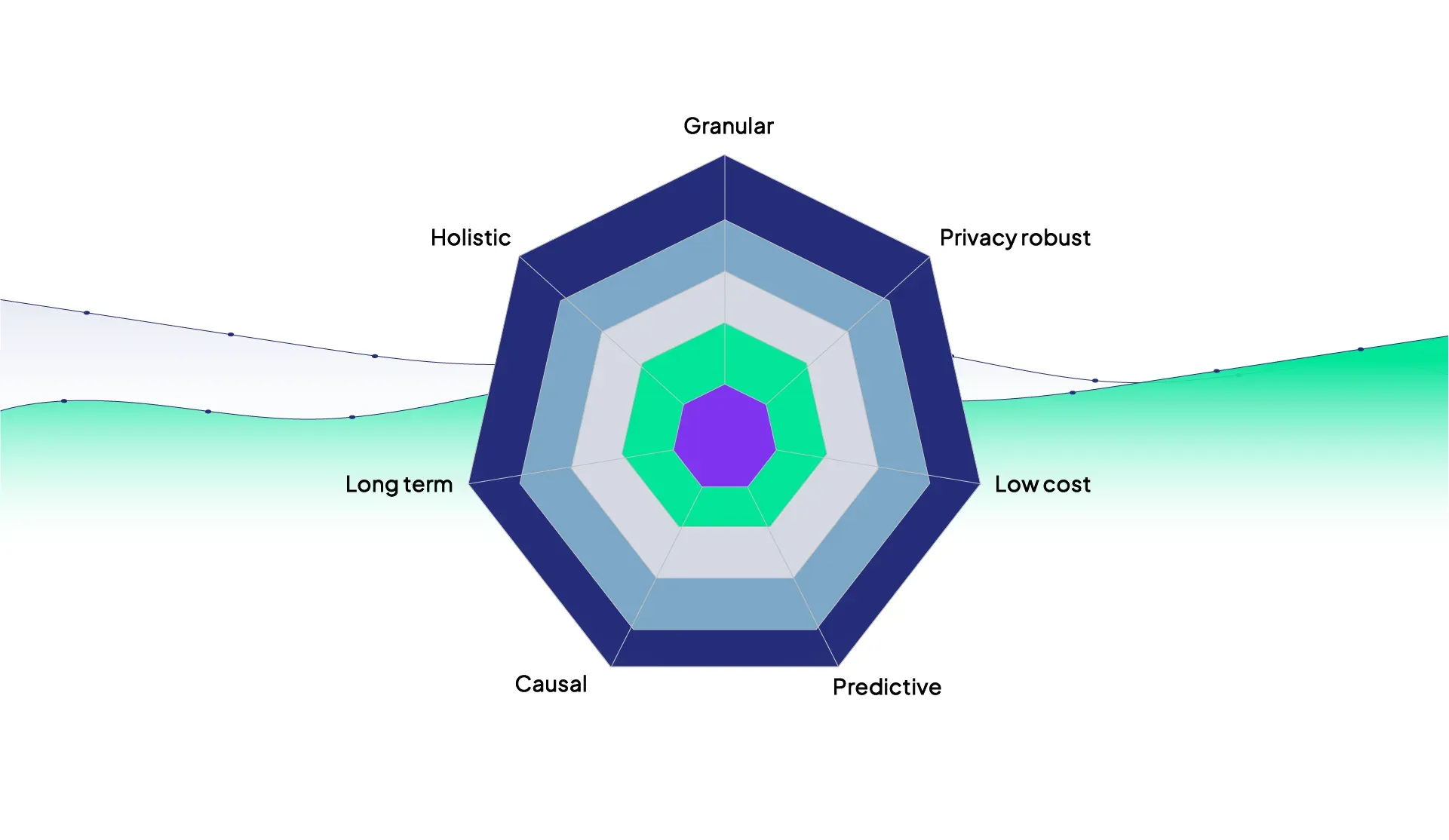
A recent IPA report, Making effectiveness work, offered one of the best visual comparisons of legacy measurement methodologies: attribution, experiments, and Media Mix Modeling (MMM).
It’s an insightful read and largely aligns with our view that there’s no longer a “single source of truth” in marketing measurement. Instead, marketers must combine multiple approaches to make informed decisions, a concept we’ve termed “Measurement Orchestration” in our white paper.
While we appreciate the IPA report, we believe it overlooks some key points:
It underestimates the granularity that attribution can provide.
It fails to include the method invented by INCRMNTAL, which addresses many limitations of legacy methodologies.
To provide a more accurate perspective, we’ve created our own comparison, assessing each methodology as transparently as possible.
Media Mix Modeling (MMM) has gained renewed interest recently because it doesn’t depend on user level data. However, most advertisers who have tried to operationalize MMM have struggled, as it wasn’t designed for granularity or causality.
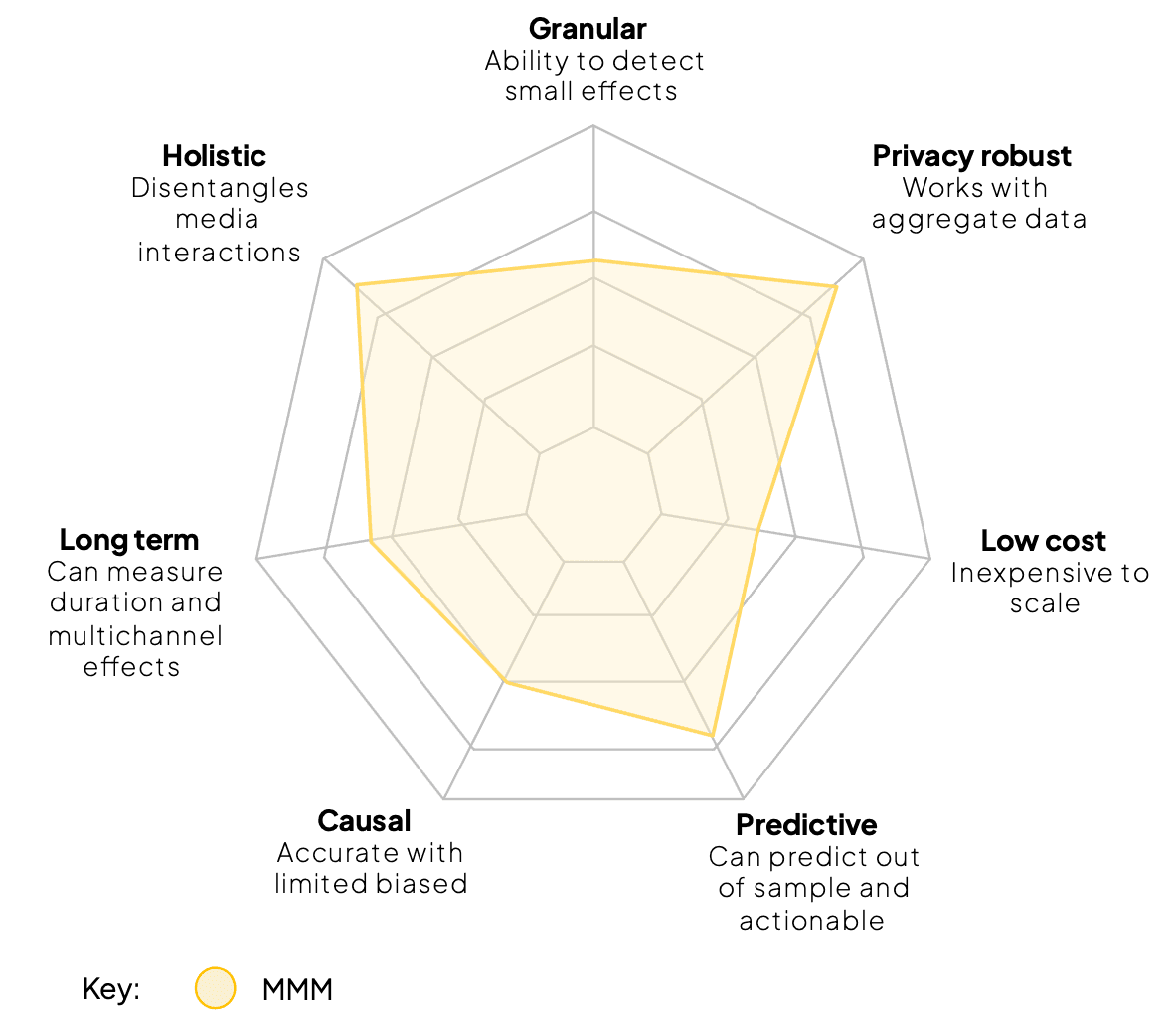
MMM works by correlating ad spend with marketing performance—seemingly reasonable—but it relies on isolated changes (like quarterly or monthly shifts), which contrasts with the modern marketer’s reality of frequent, small optimizations.
The greatest strength of MMM is its predictive power. It’s an excellent tool for scenario planning, allowing marketers to explore how changes in objectives or budgets might impact performance. However, when advertisers attempt to operationalize MMM insights for daily tactical decisions, its effectiveness falls short.
MMM's challenges include requiring vast amounts of data, making it less suitable for many performance marketers. It also depends heavily on assumptions, introducing bias into the process. Most importantly, MMM often assumes that correlation equals causation, which is not the case—especially when multiple channels and strategies are involved.
GeoLift experiments have long been considered the gold standard for incrementality measurement, and we agree with that—if the conditions allow for controlled experiments. The premise is simple: pause or stop advertising in a specific region while continuing in others, and then compare performance before and after.
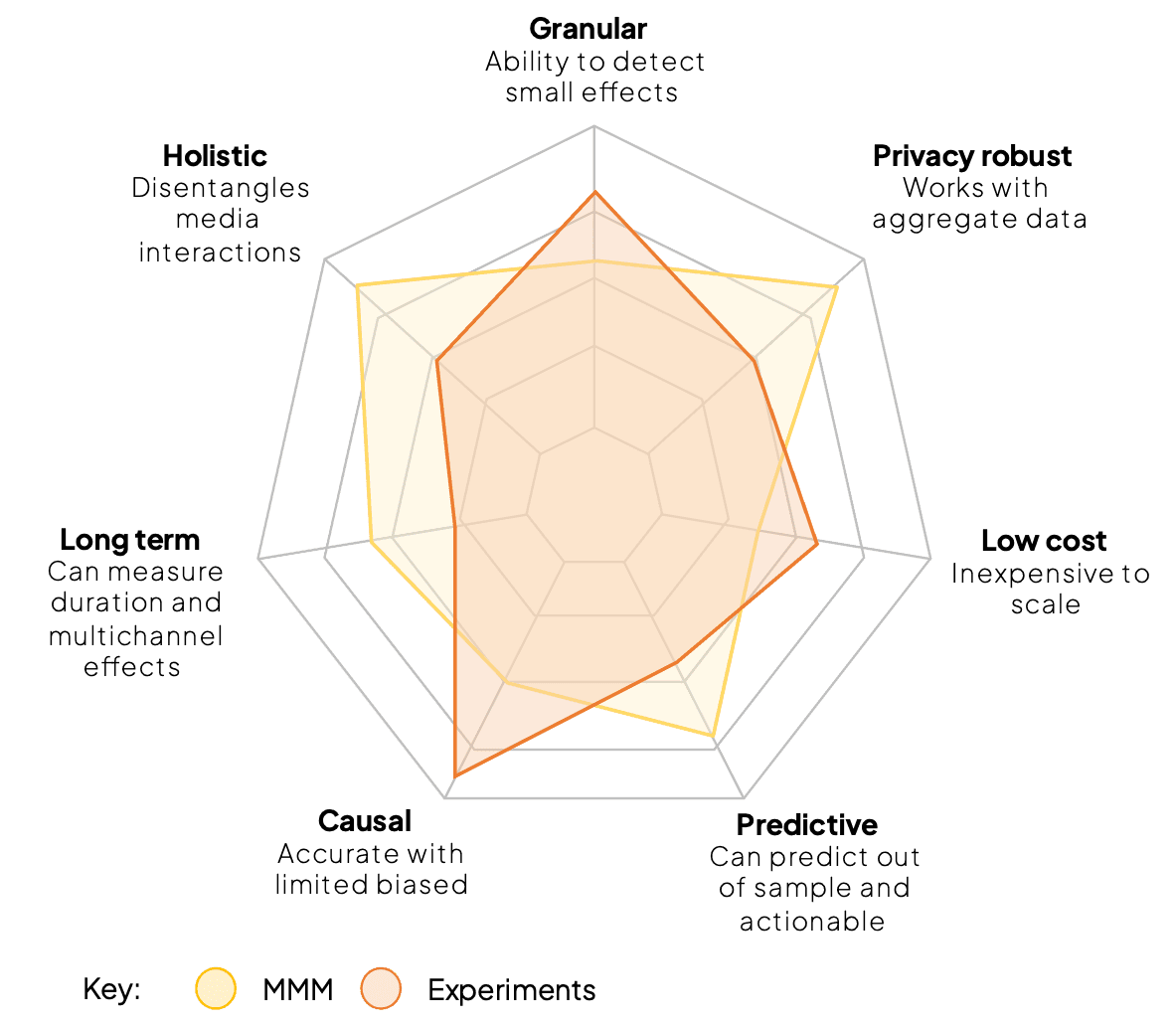
However, this method overlooks external factors like seasonality, competition, weather, and product updates, which can all influence performance more than advertising itself. While the "on-off" test feels intuitive, the conclusions drawn from GeoLift experiments are often incidental rather than truly causal.
The main advantage of experiments is their simplicity and ease of understanding. But the biggest drawback is their assumption that paid media is the sole driver of performance, leading to results that can appear scientifically valid but are often coincidental.
Attribution is one of the simplest and most widely used methods in marketing measurement. Its principle is straightforward: link ad engagements (impressions, clicks) with conversions by matching an identifier, such as a device ID, IP address, or cookie.
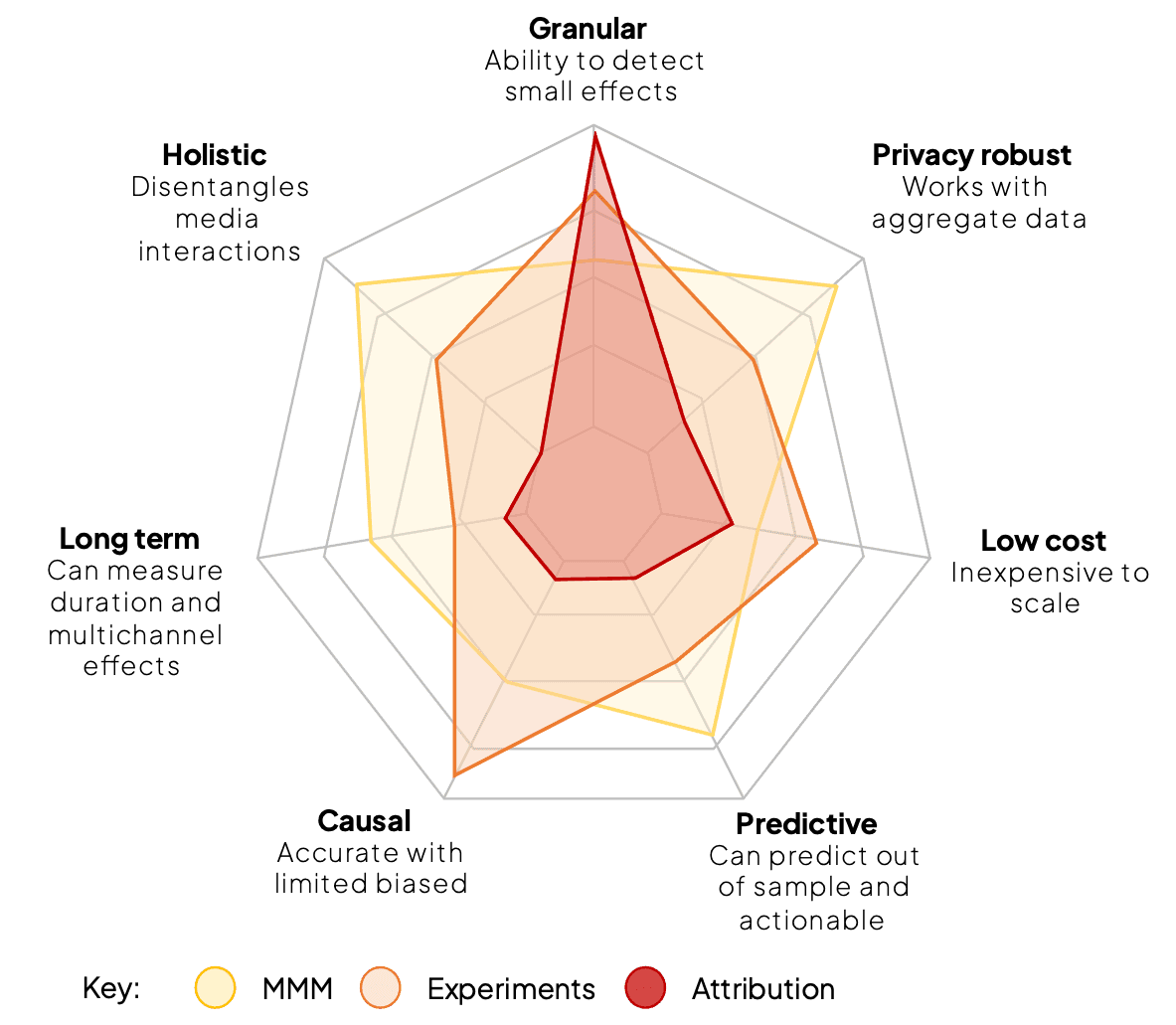
While various attribution models exist, “last-touch” attribution has become the most dominant.
We respectfully disagree with the IPA report’s take on attribution. In our view, it’s the most granular method, as it connects a single ad engagement to a single conversion—something no other method, including INCRMNTAL, can achieve. Despite its challenges, the strength of attribution lies in its granularity and near real-time insights.
(Note: The diagram next to this section reflects our perspective on attribution, which differs from the IPA report.)
INCRMNTAL’s methodology, introduced in 2020, combines micro-experiments, time-series interruptions, and causal discovery. Recognized by both academic circles and innovation authorities, this approach was developed in a post-device-ID world, where privacy compliance is critical.
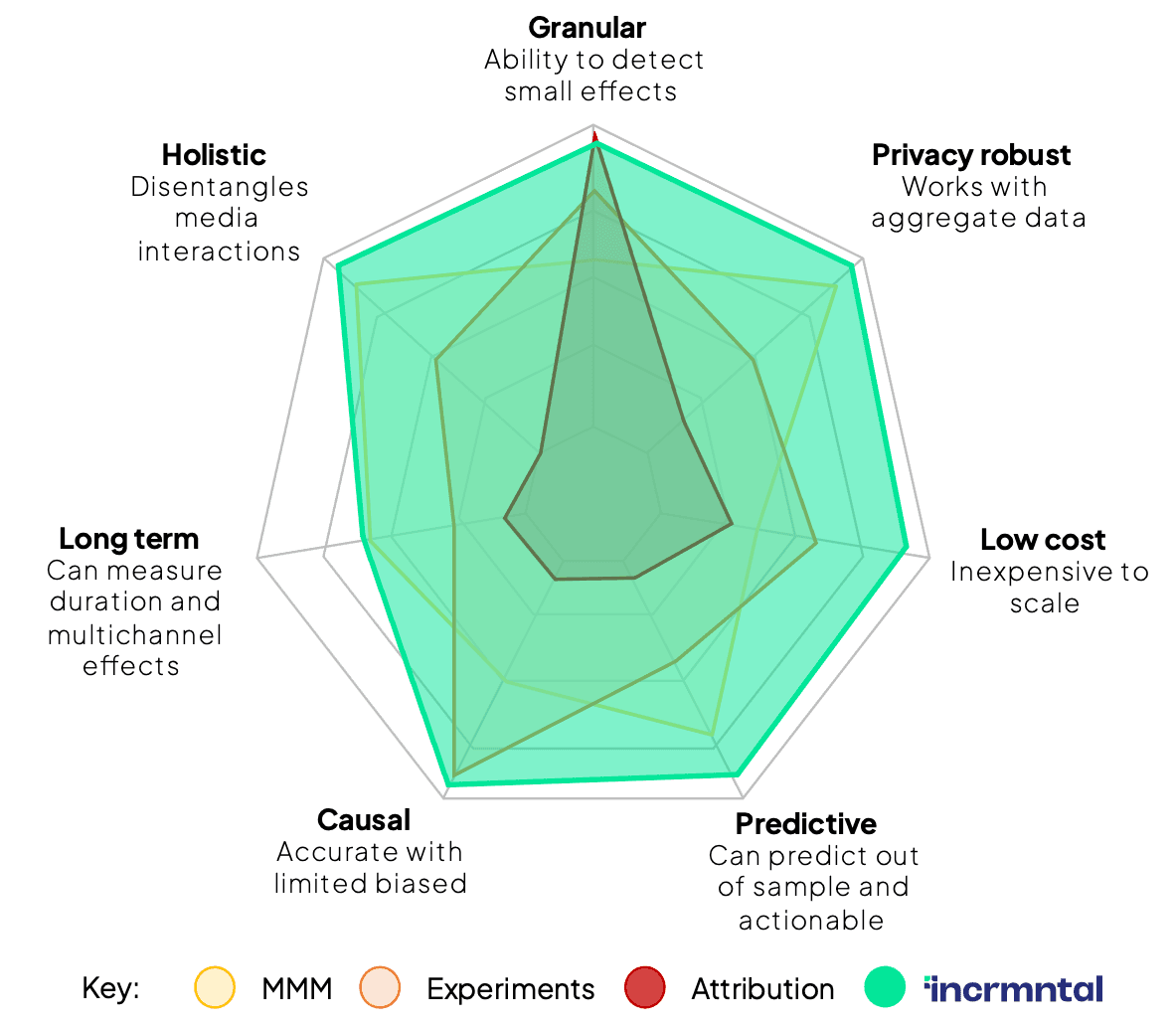
INCRMNTAL is designed for a world of constant, day-to-day optimizations. It learns from past changes, reinforcing insights using historical and real-time data. The method’s biggest advantage is its holistic nature, allowing advertisers to measure omnichannel performance across mobile, web, and other platforms without relying on user-level data.
Like any methodology, INCRMNTAL has its limitations. It doesn’t capture long-term brand equity metrics like loyalty, affinity, or perception, which still require consumer surveys and deeper analysis. However, what INCRMNTAL lacks in long-term insights, it makes up for with its predictive and causal capabilities.
No single marketing measurement method is “perfect”. The idea of a “single source of truth” was never a reality. Marketing measurement has always required a nuanced understanding of multiple factors, as consumers move through the funnel from awareness to action.
Marketers must continuously evolve and find the best combination of methods that work for their specific needs. By orchestrating various approaches, they can make more informed and effective decisions.

Maor is the CEO & Co-Founder at INCRMNTAL. With over 20 years of experience in the adtech and marketing technology space, Maor is well known as a thought leader in the areas of marketing measurement. Previously acting as Managing Director International at inneractive (acquired by Fyber), and as CEO at Applift (acquired by MGI/Verve Group)